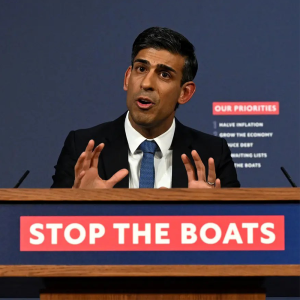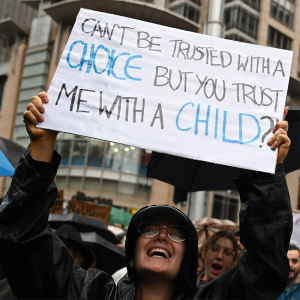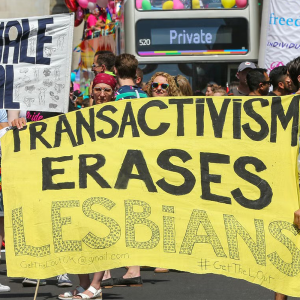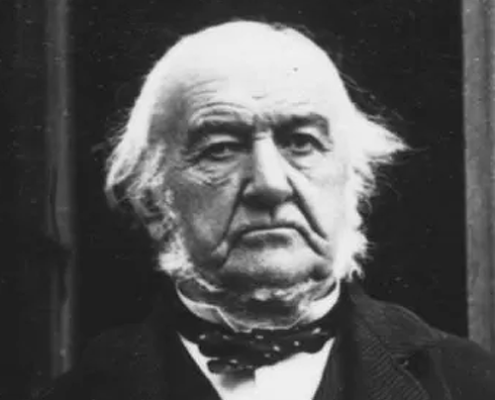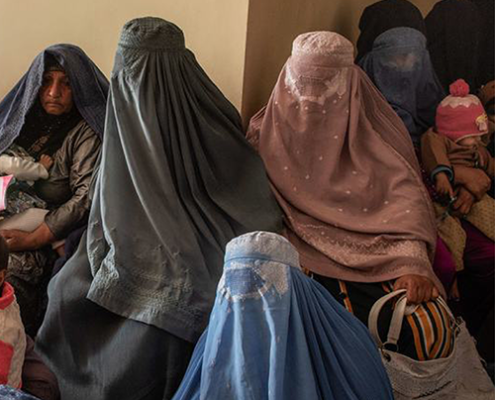What Horizontal Hostility Is & Why We Should Avoid It
“As long as the general population is passive, apathetic, diverted to consumerism or hatred of the vulnerable, then the powerful can do as they please, and those who survive will be left to contemplate the outcome.”
―
Of course, the grass is greener, except for those folk who have no grass, and in that case, we are told to remind ourselves that we are lucky with what we have.
We should not crave or covet the grass of those who own the greenest field but rather be thankful for the somewhat green grass in the plot we rent.
More than this, the elite would have us condemn those with no grass as lesser than ourselves, lazy ne’er-do-wells; ‘the undeserving poor’.
“Horizontal hostility” occurs when different marginalized or disadvantaged groups direct their frustrations, criticisms, or blame towards each other rather than focusing on the larger systems of oppression or discrimination that affect them all.
Horizontal hostility can arise when there is a perception of competition for limited resources, recognition, or social standing among different groups. This phenomenon can hinder solidarity and collective action among marginalized communities, diverting attention from addressing systemic issues and reinforcing divisions.
One of the things Billy Connelly did very well was describing why the system of class continues to pervade British society and how successive governments and leaders have used the divisions within the community to divide the populace even more before successfully getting one group to turn on another rather than target their discontentment at the government.
His jokes were very often at the expense of the wealthy and often drew attention to disparities between classes, the poor logic of government policy irrespective of their political hue and, more often than not, where a policy created a greater than a normal disadvantage to the poor. He was able to get anyone who listened to him to see that intentional social disadvantage was ludicrous by getting everyone to laugh.
- Diversion of Attention: Governments can divert public attention from systemic issues and their policies or actions by encouraging or exacerbating conflicts between disadvantaged groups. By directing the focus towards intergroup conflicts, governments can avoid addressing more significant structural problems or facing accountability for their actions.
- Divide and Conquer: Governments may exploit horizontal hostility to weaken collective resistance and social movements. By fostering divisions and rivalries among marginalized groups, governments can prevent them from uniting and effectively advocating for their rights or demanding change. This fragmentation makes it easier for the government to maintain control and power.
- Blaming the Disadvantaged: Governments sometimes scapegoat specific disadvantaged groups for societal problems to shift blame away from themselves or more privileged segments of society. By pitting one marginalized group against another, governments can deflect responsibility and maintain social hierarchies, reinforcing existing power dynamics.
- Maintaining the Status Quo: Horizontal hostility can inadvertently reinforce the existing power structures by directing the focus and energy of disadvantaged groups inward rather than towards challenging the systems and policies that perpetuate inequality. Governments can benefit from the lack of unity and solidarity among marginalized communities, as it reduces the likelihood of significant social and political change.
This idea of manipulating the populous by vilifying a group within the mob is an interesting notion and one which, whether developed knowingly by some Machiavellian malevolent elite or not has manifested in all periods of history and all cultures; the principle that it is comforting for folk to know that there are others worse off than them.
Of course, the grass is greener, except for those folk who have no grass, and in that case, we told to remind ourselves that we are lucky with what we have. We should not crave or covet the grass of those who own the greenest field but rather be thankful for the somewhat green grass in the plot we rent. More than this, the elite would have us condemn those who have no grass as lessor than ourselves, lazy ne’er-do-wells; ‘the undeserving poor’.
- Inter-group Criticism: When members of one disadvantaged group consistently criticize or blame another disadvantaged group for their struggles or challenges without acknowledging the larger systemic issues at play, it may indicate horizontal hostility. This criticism tends to focus on intra-group conflicts rather than addressing shared concerns.
- Competitiveness and Rivalry: If different marginalized groups compete for resources, recognition, or social status, often fueled by resentment or hostility towards one another, it suggests the presence of horizontal hostility. This competitiveness can undermine solidarity and collaboration among these groups.
- Lack of Intersectional Understanding: Horizontal hostility often overlooks the intersections of identities and fails to recognize the overlapping forms of oppression faced by individuals from multiple disadvantaged groups. It ignores systemic inequalities’ complexity and focuses on simplistic or one-dimensional narratives.
- Fragmentation and Division: Horizontal hostility leads to fragmentation and division among marginalized communities, inhibiting their collective efforts to challenge oppressive systems. Instead of finding common ground and working together for social change, different groups become isolated and conflict with each other.
- Manipulation by External Forces: Sometimes, external entities, including media outlets or politicians, exploit existing tensions between marginalized groups to advance their own agendas. They may deliberately stoke horizontal hostility to distract attention from larger social issues or to sow discord within these communities.
Talking about it like this seems nonsensical and simplistic, but nevertheless, it resonates as truth. It chimes with familiarity.
The old establishment looks down upon the nouveau riche, the nouveau riche look down upon the middle class, the true middle class look down upon the aspiring middle class, the aspiring middle class look down upon the working class, the working class look down on benefit claimants (even if they are working poor), the working poor look down upon the unemployed and, of course, everyone looks down upon the immigrant and the homeless.
The bizarre thing is, the trick so many of the elite can achieve is to get nearly every soul below them to look down with blame instead of up. But the answer to so many of Britain’s social problems rests at the top, particularly the top who so cleverly designed a system where they do not have to pay their way in terms of tax for the wealth they accrue.
- Racial and Ethnic Communities: Horizontal hostility can occur between racial or ethnic groups, particularly when they have had distinct historical experiences, cultural differences, or conflicting interests.
- Gender and Sexual Minorities: Disagreements and tensions can arise between different gender identities, such as transgender individuals and cisgender individuals, or between different sexual orientations, such as gay, lesbian, bisexual, and queer communities.
- Socioeconomic Groups: Horizontal hostility may manifest between different socioeconomic classes, with individuals from lower-income backgrounds directing frustration or blame towards those they perceive as being better off economically and vice versa.
- Disability Communities: Conflicts and misunderstandings can arise between individuals with different types of disabilities, such as physical disabilities, sensory impairments, or mental health conditions.
- Religious and Cultural Communities: Horizontal hostility can occur between religious or cultural groups, especially when there are historical or ideological differences or when individuals from one group feel marginalized or misunderstood by another.
Whilst living abroad in a developing country, the poverty and injustice are apparent, seen in sharp relief against those who are wealthy by any definition on earth. Grotesque amounts of wealth compared to most who exist on next to nothing. Services are dreadful, and one only has to look at the proportion of the population which pays tax to understand why there is insufficient money to provide good quality housing, health, education or employment to all who need it.
Although the effects of profound poverty might not be so visible in the UK, the gap between the different groups in society closed during the second half of the 1950s and, since the beginning of the 21st century, has widened again. Pressures on charities have increased, and government funding has been cut.
- Education and Awareness: Foster understanding and awareness of intersectionality and the shared struggles faced by marginalized communities. Promote education and dialogue, emphasising the importance of solidarity, empathy, and collective action in addressing systemic inequalities.
- Focus on Common Goals: Encourage marginalized groups to identify and prioritize their common goals and interests. Emphasize the shared experiences of oppression and the need for collective efforts to challenge systemic injustices.
- Promote Dialogue and Collaboration: Facilitate open and respectful dialogue between marginalized communities. Create safe spaces for individuals to share their experiences, challenges, and aspirations. Encourage collaboration and joint advocacy efforts to address shared concerns.
- Address Systemic Issues: Shift the focus from intergroup conflicts to systemic issues and power structures. Encourage marginalized groups to direct their energy towards challenging oppressive systems, policies, and institutions rather than blaming each other.
- Intersectional Approaches: Recognize and embrace intersectionality—the interconnectedness of various social identities—and ensure that discussions and solutions account for the diverse experiences and challenges of individuals belonging to multiple marginalized groups.
- Build Coalitions: Promote the formation of coalitions among different marginalized communities. Encourage organizations, activists, and advocates to combine their strengths and resources to amplify their voices and effect meaningful change.
- Media Literacy and Responsible Reporting: Encourage media outlets to practice responsible reporting by avoiding sensationalism, divisive narratives, and stereotypes that can fuel horizontal hostility. Promote media literacy to help individuals critically analyze and challenge biased or divisive media portrayals.
- Leadership and Representation: Foster inclusive leadership and representation within marginalized communities. Support diverse leaders who can bridge divides and promote solidarity among different groups.
- Allyship and Support: Encourage individuals from privileged groups to be allies and support marginalized communities. Allies can use their privilege to amplify marginalized voices, challenge discrimination, and actively work towards dismantling systemic barriers.
- Self-Reflection and Unlearning Bias: Encourage individuals to self-reflect and examine their biases and prejudices. Actively work towards unlearning harmful stereotypes and assumptions that contribute to horizontal hostility.
When I think about my upbringing it was one which was privileged but not excessive. Money was tight, but we still had family holidays abroad every year, sometimes two. Our father gave our mother housekeeping, and he and we lived a comfortable life.
Yet, when I think of my own peers, I know very few who can afford the lifestyle maintained by their fathers and grandfathers, who, in most cases, lived without debt beyond their mortgage, and even then, it was paid off. The concept of interest-only mortgages is beyond reasonable imagination. Now, so many cannot even afford a deposit for a mortgage.
Why not then tax the wealthy and make offshore profits taxable? Is it any surprise that the ridiculously expensive Brexit was triggered before the EU did precisely that? Is it any surprise that countries like Germany don’t rely on charities and volunteers to fulfil social services in the community but instead pay for them through taxes?
So while I read pretty extreme right-wing abuse on social media spewing constantly and looking for other poor folks to blame for this government not having sufficient funds to pay for this or that, I am reminded by an old clip of the Big Yin in his prime on a Parkinson chat show to look up at where the blame truly belongs.
“The King will reply, ‘Truly I tell you, whatever you did for one of the least of these brothers and sisters of mine, you did for me.’
Citations:
1 Martocci, L. (2017) What are ‘Horizontal Hostilities?’ | Psychology Today. [online] Available at: https://www.psychologytoday.com/us/blog/you-can-t-sit-us/201704/what-are-horizontal-hostilities [Accessed 14 Jul. 2023].
Here are some other posts folks have read:
About Rev Lloyd Hobbard-Mitchell
Rev. Lloyd Hobbard-Mitchell, an Englishman deeply connected to Thailand, was ordained to the Sacred Priesthood on 28th May 2023.
In addition to his religious journey, he has worked as an online English teacher and pursued a career as an artist. He has also operated a tour desk business with his wife within international brand hotels.
Lloyd has extensive experience in the voluntary sector, specifically in addressing homelessness and social welfare.
He is a Fellow of the Royal Geographical Society and embraces opportunities to meet new people, see new places, explore cultural similarities, and celebrate differences.

